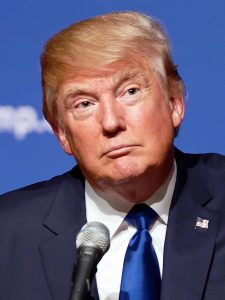
Publisher: The Globe and Mail
Author: Matt Lundy
Published: http://www.theglobeandmail.com/report-on-business/economy/why-donald-trump-needs-immigration/article34067443/
In his quest to boost economic growth, Donald Trump would be wise to consider doing the unthinkable: embrace immigration.
Unthinkable because, in the opening days of his presidency, Mr. Trump signed an executive order temporarily banning the entry of citizens from seven Muslim-majority countries – a move since blocked in U.S. courts and widely condemned in Corporate America.
Unthinkable because, in a prolonged and bitter presidential campaign, Mr. Trump vowed to build a wall along the Mexican border and deport millions of unauthorized immigrants.
But tighter immigration policy will almost certainly make his lofty economic goals even tougher to attain.
Mr. Trump has pledged to lift growth to an average annual rate of 3.5 per cent, “with the potential to reach a 4-per-cent growth rate.” Such rates of annual real gross domestic product growth have not been seen in consecutive years since the tail-end of Bill Clinton’s presidency. Economists surveyed by Bloomberg don’t think Mr. Trump will come close.
Goldman Sachs economists recently warned of the U.S. President’s policies in a note to clients.
“Our simulations suggest that Mr. Trump’s policies could boost [global] growth slightly in 2017 and 2018, but are likely to weigh on growth thereafter if trade and immigration restrictions are enacted,” they wrote, noting a potential hit to the labour pool.
Without immigration, the U.S. economy is, quite simply, less dynamic. Here are some reasons why.
Immigrants make the U.S. economy larger
“The primary impact of immigrant inflows to a country is an expansion in the size of its economy, including the labour force,” said a 2016 report from the National Academies of Sciences, Engineering and Medicine. By one estimate, immigrants (both legal and illegal) make the U.S. economy 11 per cent larger each year – equivalent to roughly $2-trillion (U.S.) in 2016.
Moreover, like many other Western nations, the United States has a dwindling fertility rate and aging population. It needs immigration to help replenish, and grow, its stock of workers. The bulk of U.S. population growth between 2014 and 2060 will stem from immigration, according to projections from the U.S. Census Bureau, and roughly 20 per cent of births during this span are expected to come from foreign-born mothers.
Immigrants are working
Foreign-born persons comprise a growing share of the U.S. work force, accounting for 16.7 per cent of the total in 2015, the most recent available data show. They have higher participation rates and lower jobless rates than the native-born population. The difference is especially stark for men. Just over 78 per cent of foreign-born men were working or looking for work in 2015, compared with 67.3 per cent in the native-born population.
Immigrants are also more likely to be self-employed, according to a Pew Research Center analysis of Census Bureau data.
Immigrants are driving innovation
U.S. tech companies were especially vocal in their opposition to Mr. Trump’s ban, and for good reason: Foreign workers are key players in American innovation. Just over half of U.S. startups with billion-dollar-plus valuations had at least one immigrant founder, according to a 2016 study from the National Foundation for American Policy, a non-partisan think tank. Foreign-born workers also hold an outsized portion of high-skill jobs in parts of the San Francisco Bay Area, a report from the non-profit group Joint Venture Silicon Valley shows.
This raises a vital question: Are immigrants stealing jobs from native-born Americans?
Studies typically find that in aggregate, immigration has little impact on wages and employment for native-born Americans. The effects, however, can be greater for those competing directly with new immigrants, such as U.S.-born high-school dropouts and previous immigrants.
Illegal immigrants are working, too
Mass deportation would deal a hefty blow to some U.S. industries.
Eight million unauthorized immigrants were in the U.S. work force in 2014, according to Pew Research Center estimates, and they held a sizable portion of jobs in the construction and agriculture industries. For instance, nearly half of U.S. crop workers are unauthorized immigrants, estimates from the latest U.S. National Agricultural Workers Survey show.
Could Americans fill the void from a mass departure of foreign workers? Probably not.
Already, U.S. companies are struggling to find the right employees.
In a recent U.S. National Federation of Independent Business survey, 47 per cent of small businesses “reported few or no qualified applicants for the positions they were trying to fill.”
“This is not a problem caused by low-wage countries, [these are] problems caused by ineffective systems of education/training and immigration,” said Michael Gregory, deputy chief economist at BMO Nesbitt Burns, in a note.
Shortly after Mr. Trump’s ban, David Rosenberg, chief economist at Gluskin Sheff + Associates, wrote that “unprecedented skills shortages are the No. 1 constraint on economic activity.
“The limits on immigration will merely exacerbate the problem.”